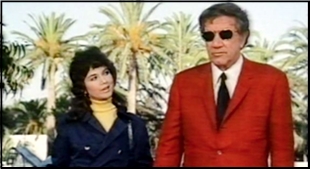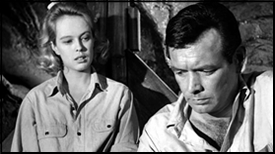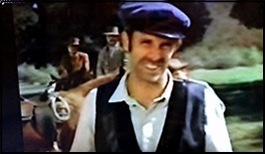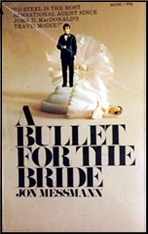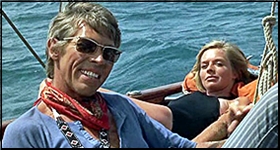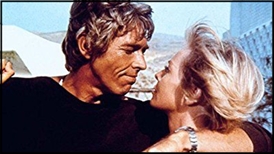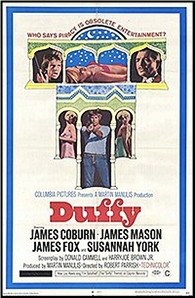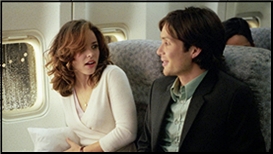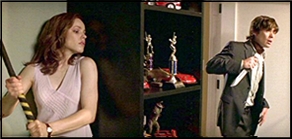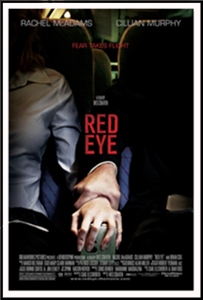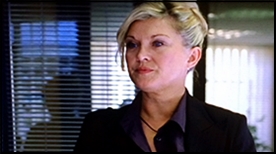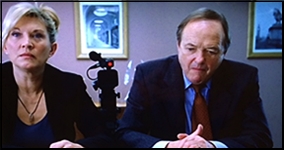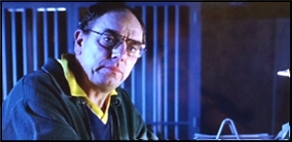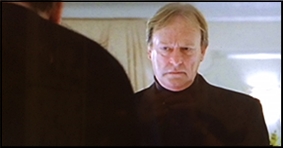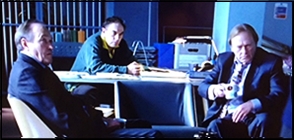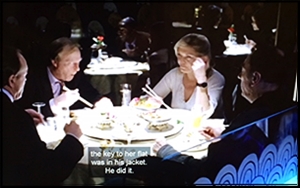Tue 13 Oct 2020
A Made-for-TV Movie Review by Mike Tooney: IN BROAD DAYLIGHT (1971).
Posted by Steve under Reviews , TV mysteries[8] Comments
IN BROAD DAYLIGHT. Made for TV movie. ABC, October 16, 1971. Running time: 74 minutes. Richard Boone (Tony Chappel), Suzanne Pleshette (Kate Todd), Stella Stevens (Elizabeth Chappel), John Marley (Lt. Bergman), Fred Beir (Alex Crawford), Whit Bissell (Capt. Moss), Paul Smith (Charlie). Producers: Robert Mirisch and Aaron Spelling. Writer: Larry Cohen. Director: Robert Day.
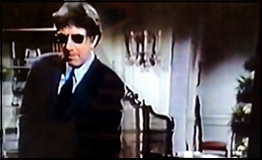
It’s graduation day for retired actor Tony Chappel as he signs an autograph and leaves the rehab center. Kate Todd has been assigned as his personal assistant and sees nothing sinister in Tony’s vigorous efforts to reacclimate himself to a more or less normal life, as Tony insists on taking cabs and buses all around town from his beachfront home until he knows the routes by heart.
Certainly his faithless wife Elizabeth isn’t alarmed, but there’s good reason why she should be: Tony plans to kill her and her lover at the earliest opportunity. Only three things stand in Tony’s way: a common object found in most American households, a smart police detective, and probably the biggest obstacle between Tony and his goal, a fact which we’ve known since the first scene, that he is totally and irremediably blind . . . .
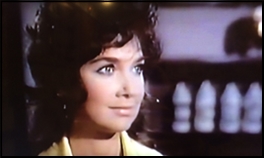
In a Wikipedia article about In Broad Daylight we learn that writer Larry Cohen thought Richard Boone was miscast, but we couldn’t disagree more. Boone is excellent, watchable in every scene, and interest never flags as the story unfolds, which, considering too many made for TV films, is saying something.
Richard Boone is remembered primarily for his TV series, Have Gun – Will Travel (1957-63; 225 episodes), but if the script called for it he could be the meanest sonuvagun around (e.g., the John Wayne opus Big Jake, 1971).

The supporting cast is filled with faces you might know but couldn’t put a name to. You probably remember Suzanne Pleshette and Stella Stevens, of course (who wouldn’t?), but there are great character actors here as well: John Marley (e.g., Cat Ballou, 1965), Fred Beir (well over a hundred guest shots, mostly in television), Whit Bissell (over three hundred appearances!), and, next to Bissell, possibly the most familiar face, Paul Smith, who specialized in memorable bit parts everywhere but did have steady work in The Doris Day Show (1969-71; 33 episodes) and a completely forgotten superhero sendup series, Mr. Terrific (1966-67; 17 episodes), as well as No Time for Sergeants (1964-65; 13 eps), The Gertrude Berg Show (1961-62; 18 shows), and Fibber McGee and Molly (1959; 4 episodes).
Veteran television director Robert Day would go on to work on one of our favorite Levinson & Link efforts, Murder by Natural Causes (1979), which we hope to get to soon.
Despite the writer’s misgivings, we unhesitatingly recommend In Broad Daylight. It’s a worthy installment in “The Perfect Murder” subgenre.
